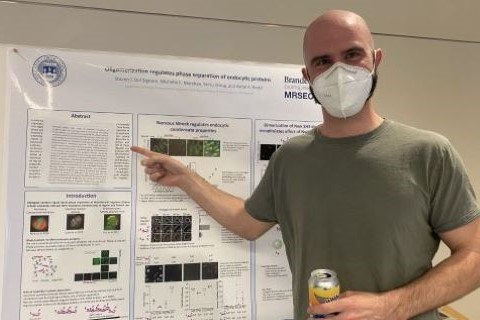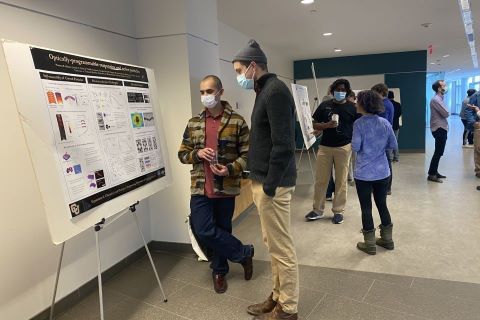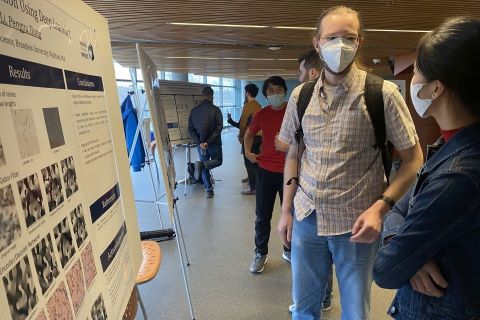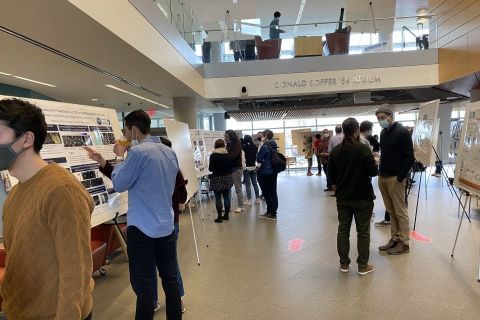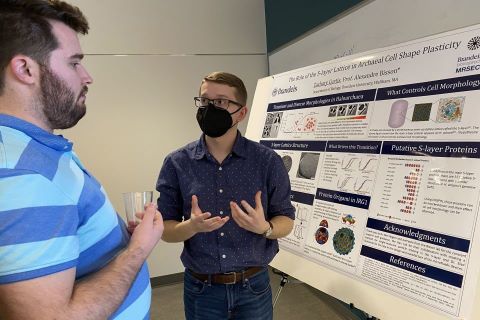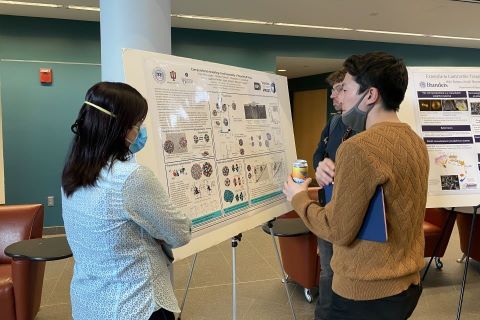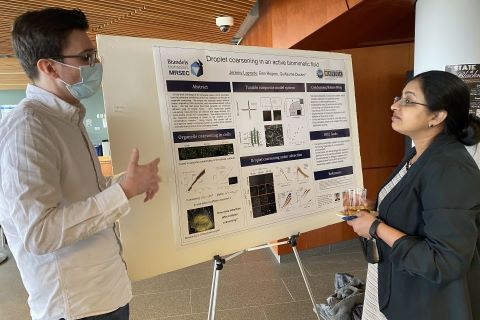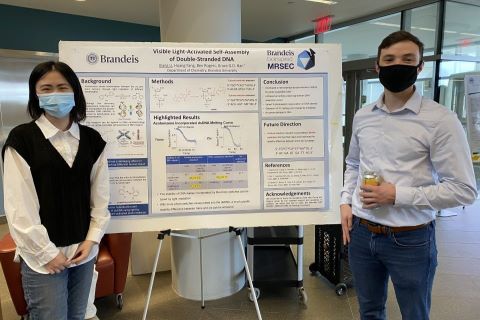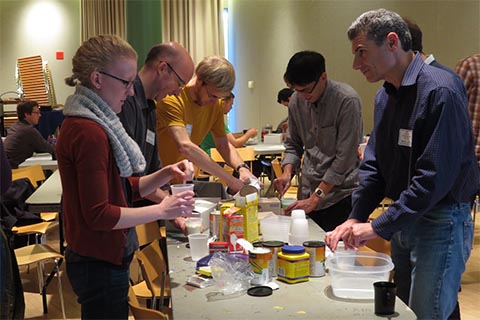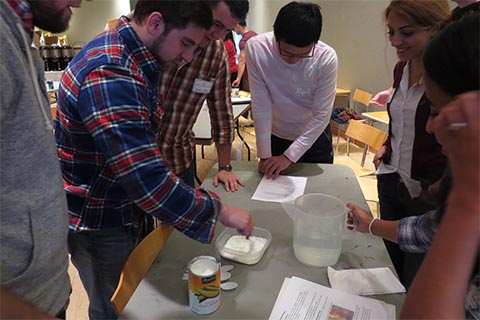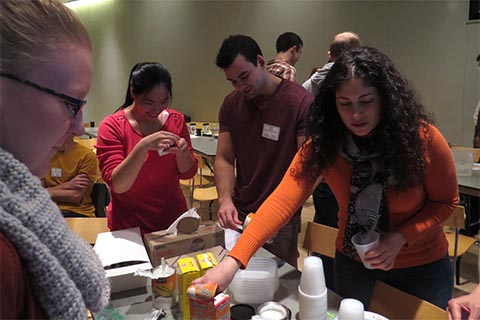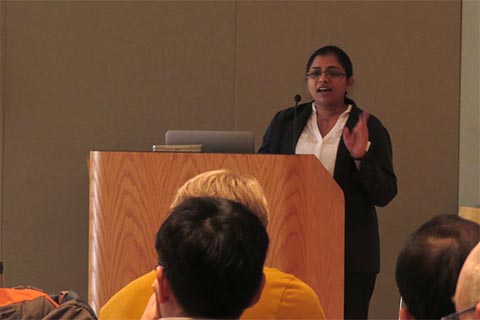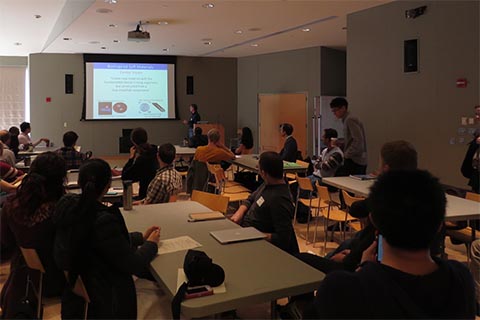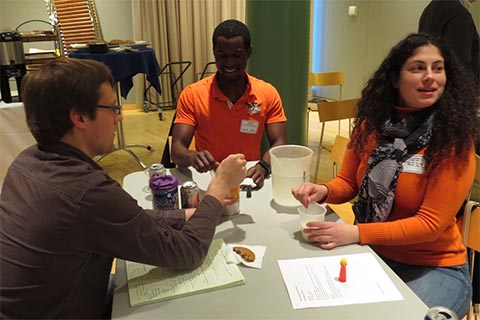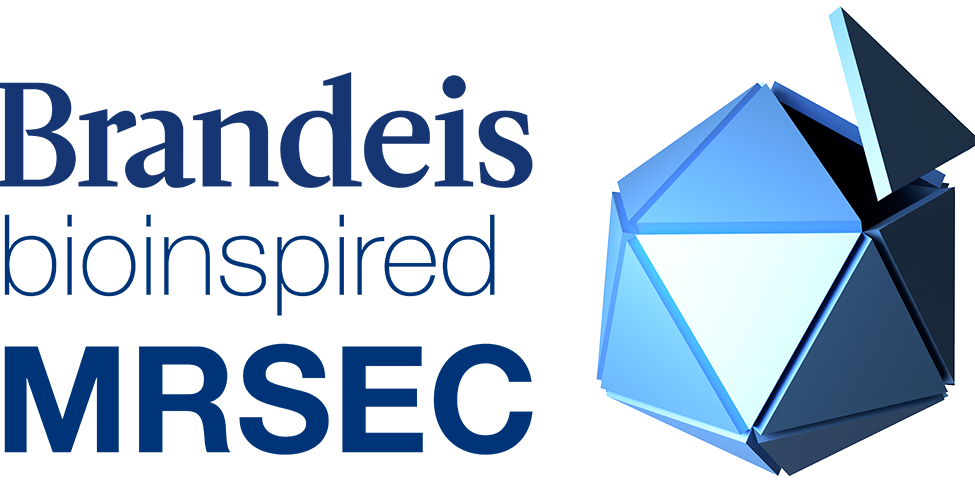Jan. 22, 2021
- Welcome: Seth Fraden
- Education, Outreach and Diversity Update: Anahita Zare
- Hampton University PREM Update: Demetris Geddis
- Steven Del Signore: Micron scale assembly and organization of endocytic pProteins
- Farri Mohajerani: Liquid-liquid phase separation and cargo encapsulation in self-assembling microcompartments
- Thomas Videbaek: Viewing dynamics of DNA origami assembly
- Erin Deans: Single-particle platform for study of reovirus outer-capsid assembly
- Huang Fang: How do we make a tubule structure with a specific size
- Jonah Paasche-Orlow: Targeted encapsulation of Sars-CoV-2 with DNA origami
- Botond Tyukodi: Equilibrium calculations on self-limited assemblies
- Hongjian He: Enzyme-instructed self-assembly for selectively transfecting the mitochondria of cancer cells
IRG 1 Talk by Dr. Ben Rogers — Programmed self-limiting assembly
Abstract: The self-assembly of sub units into large, but finite-size superstructures remains a grand challenge in soft matter. While living systems routinely achieve size-controlled assembly of functional materials, such as bacterial microcompartments and collagen fibers, synthetic approaches to size-controlled assembly lag far behind biology. The vision of IRG1 is to program the assembly of finite-size structures on length scales many times larger than the building blocks themselves. In this talk, I will provide an overview of the goals of IRG1 and highlight some of the progress to date. Throughout, I will provide specific examples of programmable building blocks that autonomously form materials with precise, tunable sizes via two paradigms: Thrust 1: Curvature-Controlled Assembly, using tapered monomers that form self-closing objects; and Thrust 2: Frustration-Controlled Assembly, using frustrated monomers that accumulate distortions upon assembly to form self-limited structures with open boundaries.
IRG 1 Talk by Dr. Grace Han — Optical modulation of DNA binding and assemblies
Abstract: Photo-switches are small molecules that respond to light by changing their structure in a reversible fashion. The incorporation of photo-switches in oligonucleotides has been reported to alter the degree of binding between complementary sequences, while the switches used primarily absorb UV that degrades biomolecules. We aim to develop novel oligonucleotide-switch complexes that operate under longer wavelengths of visible light, enabling the repeated switching of DNA assembly and disassembly under benign conditions. This strategy will be extended to control the assembly of the subunits of macro DNA origami structures.
Poster Session 2 (view posters)
- John Berezney: Engineering self-organization in active composites
- John Mallon: Developing systems for archaeal cytoskeleton imaging
- Salman Alam: Role of confinement in stabilizing 3D Active nematic droplets
- Linnea Lemma: Controlling active stress with light in active gels and nematics
- Matthew Peterson: Elastically confined polar active filaments
- Sarvesh Uplap: Design principles for transport of vesicles by enclosed active particles
- Minu Varghese: Elastic active nematics
- Joseph David Lopes: Active matter based on actin polymerization
- Pooja Chandrakar: Confinement-controlled length scales in active fluids
- Chaitanya Joshi: Data-driven discovery of active nematic dynamics
- Aldric Rosario: Mechanisms of length control of actin cables in budding yeast
IRG 2 Talk by Dr. Guillaume Duclos — Engineering, measuring and controlling active stresses for building soft active adaptive material
Abstract: I will first give an overview of the active matter IRG and then give an update on how to infer and control the rheological properties of a 3D active active network.
IRG 2 Talk b Theopi Rados — Multicellular development in response to mechanical compression in Haloarchaea
Abstract: Resembling bacteria in cell appearance and eukaryotes in many of their molecular components, archaea also have a set of unique characteristics that cannot be found in other domains of life. Haloarchaea are a branch of Archaea that thrive in high salt environments. In response to such extreme osmotic conditions, haloarchaea adapted to a virtually non-existent turgor pressure which allows them to rapidly shapeshift between unusual cell morphologies. Here, I will talk about a novel phenomenon of development triggered by gentle mechanical compression in the haloarchaeon Haloferax volcanii. Under agarose pads, cells reshape into multicellular clusters with at least two differentiated cell types. The development of multicellular structures among prokaryotes is circumscribed to a small subset of bacteria, and had not been previously described in Archaea. Using a combination of live-cell imaging and genetic screenings, we are mapping down the pathways responsible for detecting and signaling physical cues from the environment and characterizing the distinct cell types identified within the clusters. Vastly studied in Eukaryotes, mechanosensing in Archaea is far from understood. Uncovering the mechanisms underlying the assembly of complex structures from simpler single-cell lifestyles will allow us to understand further how cells evolved influenced by physical cues around them.
- Group Photo and Video Competition announcement
- Closing: Seth Fraden
